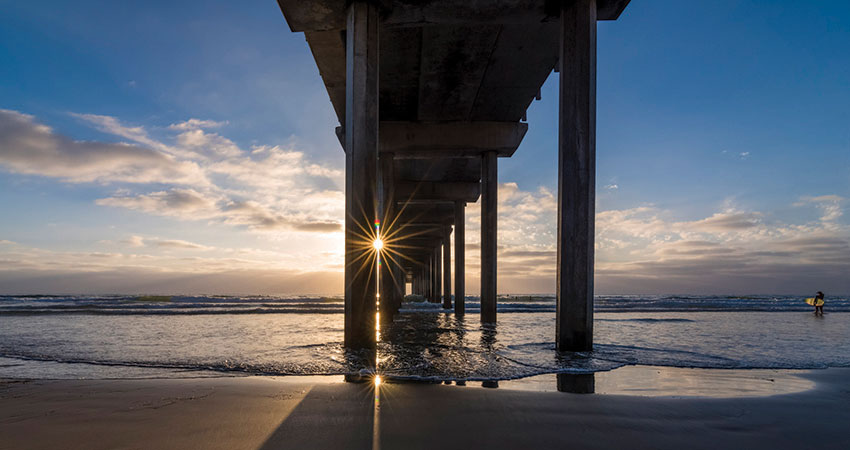
Hi Everybody!
It’s week five, and if you’re a surfer (or just spend your mornings and evenings watching the breaking waves and feeling melancholy) this is a CASPO seminar that you will not want to miss! Our very own Falk Feddersen is this week’s presenter!
Why surfers love offshore winds... the effect of cross-shore winds on overturning waves
"I often heard Walter Munk say that as oceanographers we needed to listen to the wisdom of sailors, mariners, surfers, divers, and fisherman as they have insights into the ocean that one cannot get simply by sitting at a desk. As such, every surfer knows that the waves are better when the wind is offshore (blowing from land to sea) because the waves will be more barrelling and provide greater opportunities for tubes. Another way of saying this is that surfer's wisdom is saying that cross-shore wind has an effect on overturning wave shape. The shape of depth-limited breaking-wave overturns is important for turbulence injection, bubble entrainment, and sediment suspension. However, this potential wind effect has been largely unexplored and is not included in any wave models. In this talk, I will discuss a field-scale experiment at the Kelly Slater Wave Company's Surf Ranch wave-basin with fixed bathymetry and 2.25 m shoaling solitons propagating at speed C=6.7 m/s. The nondimensional cross-wave wind U_w was onshore and offshore varying realistically (-1.2 < U_w/C < 0.7). Wave overturning was observed with lidar, a wave staff, and video. We will explore the effect that the wind has on the cross-shore location, area and aspect ratio of the wave overturn. Idealized potential flow simulations suggest strong flow acceleration near the steep crest lead to significant surface pressure variations potentially inducing wave overturn shape changes. Preliminary detailed two-phase modeling results will be shown. Through wave-overturning impacts on turbulence and sediment suspension, coastal wind variations could be relevant for nearshore morphology."
If you have any recommendations for future presenters, or if you yourself would like to present, please fill out this form.
Don’t forget about our mailing list!




